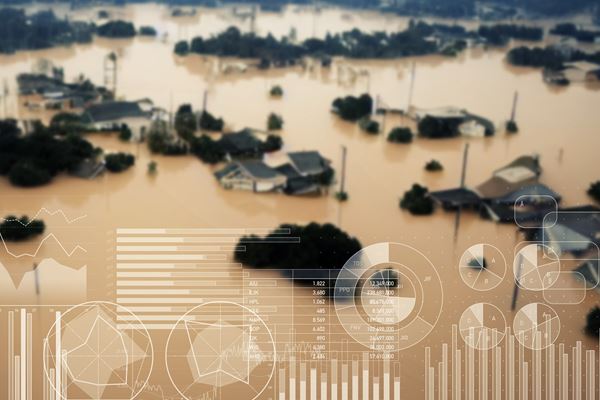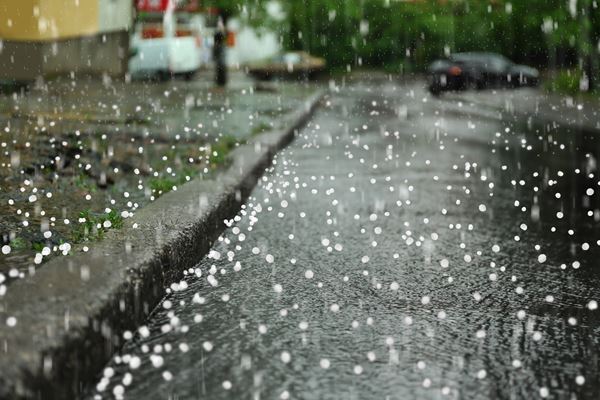Understanding Atmospheric Rivers and Bomb Cyclones: Unveiling the Dynamics of Storms in California

In February 2024, California experienced intense storms and flooding, with five to ten inches of rain falling in the greater Los Angeles area, amounting to almost half the yearly average rainfall of 14.25 inches. Two meteorological phenomena, atmospheric rivers and bomb cyclones, have been in the media throughout this weather event, but what are they?
These terms might sound daunting but understanding them sheds light on the dynamics behind extreme weather events. Let's delve into the intricacies of atmospheric rivers and bomb cyclones, unraveling their roles in the recent California storms.
Atmospheric Rivers
Atmospheric rivers are narrow bands of concentrated moisture in the atmosphere, akin to rivers in the sky. They transport large amounts of water vapor from the tropics to higher latitudes, often leading to heavy precipitation when they make landfall. These events are crucial for replenishing water resources in regions they affect, but can also result in severe flooding and landslides. While most are weak, the average atmospheric river can carry an amount of water vapor equal to the flow of water at the mouth of the Mississippi River, with stronger atmospheric rivers exceeding that by up to 1500 percent.
Characteristics of Atmospheric Rivers
Atmospheric rivers typically originate in the tropics or subtropics, where warm ocean temperatures evaporate large amounts of water into the atmosphere. They consist of long, narrow corridors of moisture that can extend for thousands of kilometers. When atmospheric rivers encounter coastal regions or mountain ranges, they release vast amounts of precipitation, causing intense rainfall or snowfall events. These events can cause immense storm damage to life and property, especially if they stall over areas vulnerable to flooding.
The Role of Atmospheric Rivers in the California Storms
The February 2024 storms brought California prolonged heavy rainfall and flooding attributed to atmospheric rivers. These moisture-laden air masses, originating from the Pacific Ocean, made landfall along the West Coast, leading to widespread precipitation and subsequent flooding in vulnerable areas such as river valleys and low-lying regions.
Bomb Cyclones
Bomb cyclones, also known as explosive cyclogenesis or meteorological bombs, are rapidly intensifying low-pressure systems characterized by a significant drop in atmospheric pressure over a short period. These storms occur when cold air clashes with warm air, leading to the rapid development of a powerful cyclone. Unlike other severe weather events that are noted for the lowest barometric pressure achieved, how quickly the pressure drops determines whether a storm is a bomb cyclone, regardless of the lowest pressure achieved. A pressure drop of 24 millibars within 24 hours indicates that the convective system is a bomb cyclone. Bomb Cyclones are responsible for some of the most violent large-scale weather systems and include notable events like the March 2019 Bomb Cyclone in Denver, CO, the November 2019 bomb cyclone off the Pacific Northwest Coast, the February 2019 winter bomb cyclone in Minnesota, and the Blizzard of 2015, among others.
Characteristics of Bomb Cyclones
Bomb cyclones undergo a process of rapid intensification, with atmospheric pressure dropping at an average of 24 millibars within 24 hours. These storms are accompanied by strong winds, often reaching hurricane-force speeds, posing risks of coastal erosion and structural damage. Bomb cyclones can bring heavy precipitation, including rain, snow, or a mix of both, depending on the temperature gradient within the storm system.
The Role of Bomb Cyclones in the California Storms
A bomb cyclone contributed to the intensity of the February 2024 storms battering California. The collision of cold air from the north with warmer, moisture-laden air from atmospheric rivers intensified the low-pressure system, leading to rapid cyclogenesis. This intensified the already hazardous conditions, with strong winds and heavy precipitation exacerbating flooding and causing widespread damage along the coast and inland areas.
Interplay between Atmospheric Rivers and Bomb Cyclones
The convergence of atmospheric rivers and bomb cyclones can amplify the impact of extreme weather events. Atmospheric rivers provide the moisture necessary for intense precipitation, while bomb cyclones enhance the dynamics of these storms, leading to rapid intensification and increased wind speeds. Understanding the interplay between these phenomena is crucial for predicting and mitigating the impacts of severe weather events.
The January and February 2024 storms and flooding in California highlighted the significance of atmospheric rivers and bomb cyclones in shaping extreme weather events. These meteorological phenomena, though distinct, often intersect to produce devastating consequences. By comprehending the dynamics behind atmospheric rivers and bomb cyclones, we can better prepare for and respond to future weather-related challenges, safeguarding lives and infrastructure.
Sources:
"Atmospheric Rivers." NOAA National Weather Service, www.weather.gov/ar/.
Neiman, Paul J., et al. "Meteorological Characteristics and Overland Precipitation Impacts of Atmospheric Rivers Affecting the West Coast of North America Based on Eight Years of SSM/I Satellite Observations." Journal of Hydrometeorology, vol. 9, no. 1, 2008, pp. 22–47.
"What is a Bomb Cyclone?" NOAA National Ocean Service, oceanservice.noaa.gov/facts/bomb-cyclone.html.
Peixoto, José Pedro, and Abraham H. Oort. "The atmospheric circulation and its variability: 6. The variability of the atmospheric circulation." The atmospheric circulation and its variability, 2016, pp. 250–296.
https://www.noaa.gov/stories/what-are-atmospheric-rivers
https://www.accuweather.com/en/weather-news/what-is-a-bomb-cyclone/433474
Our experts are ready to help.


